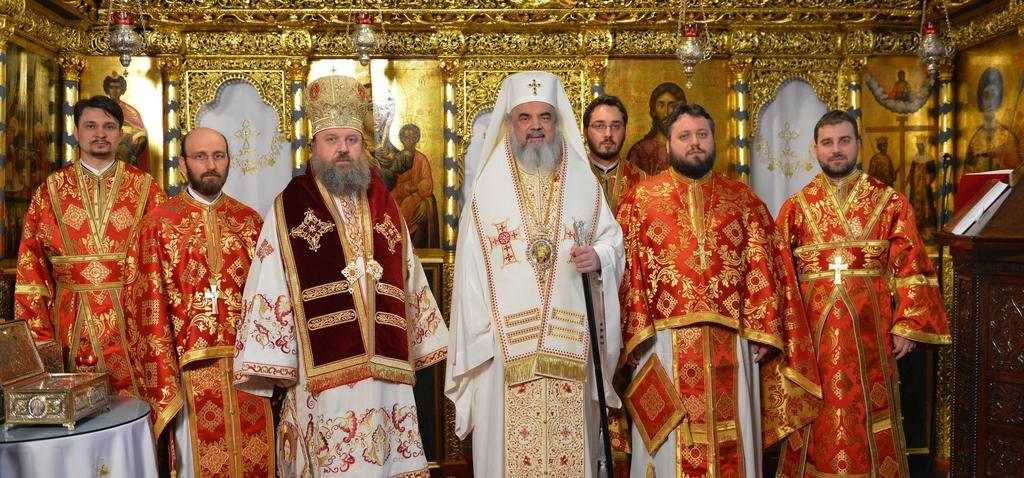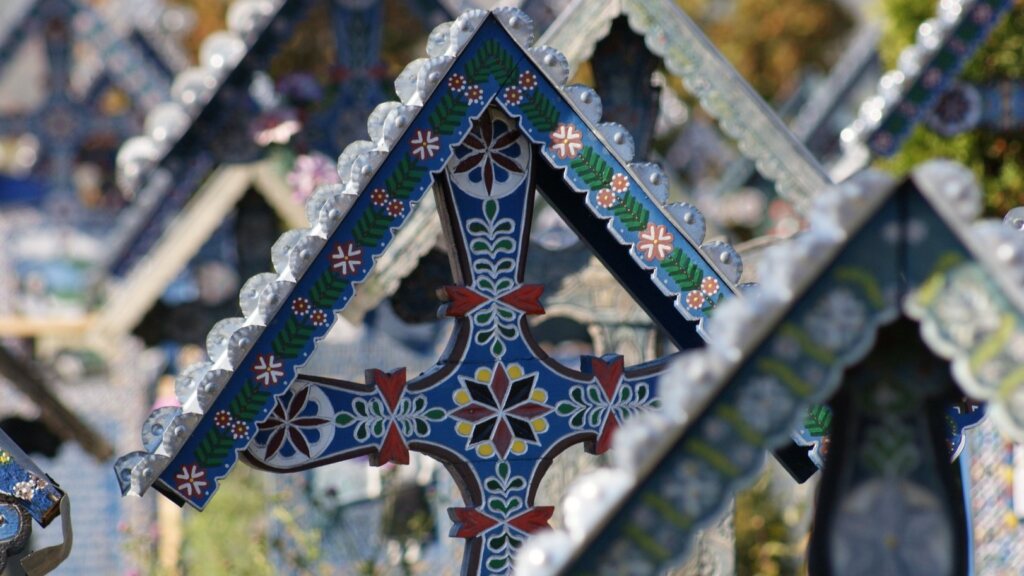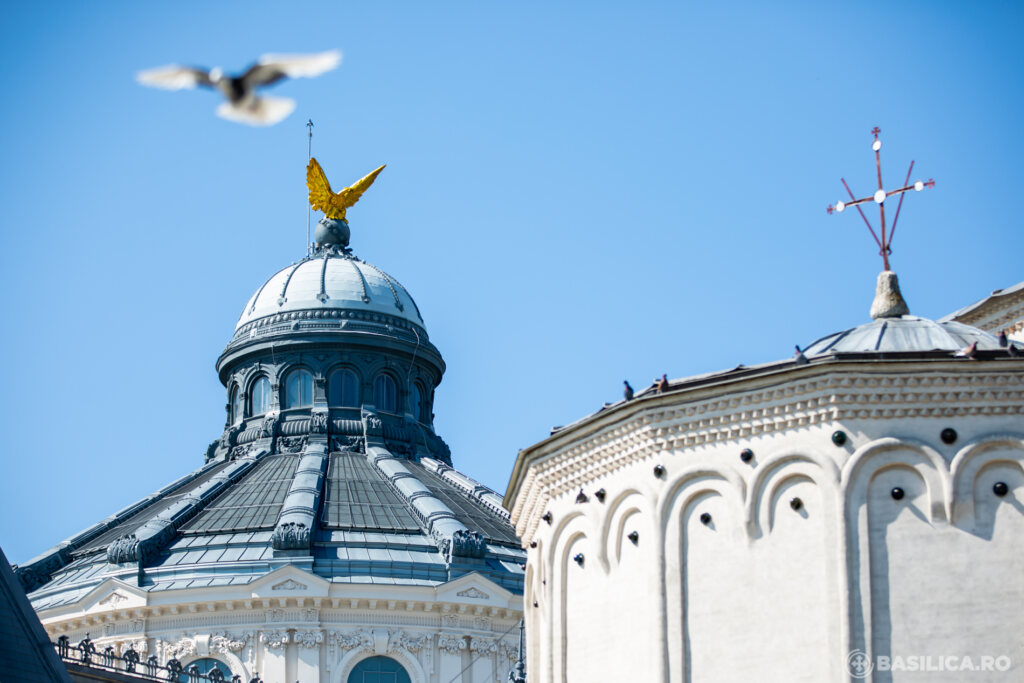Today, 23 April 2015, the Orthodox Church celebrates Saint Great Martyr George. On this holiday, the historical chapel of the Patriarchal Residence celebrated one of its protectors, Saint Great Martyr George. The Divine Liturgy was celebrated by His Grace Timotei Prahoveanul, Assistant Bishop to the Archdiocese of Bucharest, assisted by a group of priests and deacons.
On this occasion, the Patriarch of Romania delivered a sermon in which he spoke about the personality of Saint Great Martyr George showing that the great martyr whom the Orthodox Church celebrates today received a distinguished education having been a worthy person, with many virtues which his mother and the faith in Christ inspired him.
“Saint George received a distinguished education, especially from his mother who was a very religious and merciful Christian woman. After the death of his father who was a soldier in Armenia, his mother decided to go, together with her son George, to Palestine, maybe to Lida, where she had relatives and many estates. The child grew up and became a healthy young man with special moral virtues inspired by his mother and by the faith in Christ. Very soon he became well known around, commander and officer in the guard of the Roman emperor Diocletian. Saint George was very appreciated for his military virtues, and for his human behaviour”, His Beatitude said.
Saint Great George – Martyr for Christ
He joined the Roman army, promoting in the military hierarchy, and having been remarked for his deeds in the army. In spite of the decree Diocletian issued in 303 against the Christians, Saint George chose to publicly confess the Christian faith. The Primate of the Romanian Orthodox Church emphasised the fact that Saint George remained firm in his faith in spite of the tortures he suffered and believed in Christ till his death.
“In 303, Emperor Diocletian decided to start persecuting the Christians – advised by his son in law Maximian Galeriu – and issued four imperial edicts of bloody persecution against the Christians. He ordered the demolishment of the churches, confiscation of the church estates, and killing the Christian priests, clergy and laics unless they prayed to the pagan gods and brought offerings to the idols. Thus, this very bloody persecution made thousands of martyrs among the priests and soldiers and even among the persons holding high positions. Having been high officer in the army of the emperor and officer in his personal guard, when the emperor decided these persecutions, Saint George declared in front of all those present that he was a Christian and that he wanted to remain Christian and that he could serve in the army of the emperor only as soldier of Christ. The emperor was surprised by such a courage and confession and tried first, through a messenger, to persuade him to give up the Christian faith, but Saint George did not accept and kept on believing in Christ. Then, the emperor had him imprisoned and tortured, beaten in many ways, thrown in a whole of quick lime, obligated to walk with iron footwear with nails in the soles which caused terrible pain; he has also been tied to a cogged wheel and tortured in many ways, but he overcame all this suffering with the help of God. Having seen his torture and power of endurance, lots of soldiers understood it was a special power in the person of Saint George and gave up the pagan idols and became Christians too. The wife of Emperor Diocletian, Empress Alexandra, has also become Christian. After seeing that Saint George was safe and sound after all this torture, the emperor was very angry and had him beheaded, so that on 23 April 303, he died a martyr’s death, having been beheaded”.
His Beatitude Patriarch Daniel has also shown that Saint George is very popular not only in Romania, but also in many other countries. Thus, 12 countries have him as protector: England, Ethiopia, Georgia, Greece, Lithuania, Malta, Moldova, Montenegro, Palestine, Portugal, Russia and Serbia.
Saint George – protector of the historical chapel of the Patriarchal Cathedral
The Patriarch of the Romanian Orthodox Church explained why Saint Great Martyr George is the protector of the historical chapel: “Although the dedication day of this chapel was the feast of Saints Constantine and Helen, because its construction began at the same time with that of the Cathedral during the reign of Prince Constantine Serban Basarab, later on, it was finished and consolidated by prince Gheorghe Duca. This is why the main dedication day is that of Saint Great Martyr George, but the icon of Saints Emperors Constantine and Helen can still be seen at the entrance into the chapel”.
On the feast of Saint George over one million Romanians celebrate their name day. On this occasion, His Beatitude Patriarch Daniel addressed best wishes to those of the name of Saint George.
“We pray Saint Great Martyr George to give many blessed years in good health and salvation, with peace and joy to all those of the name of George and of other names derived from it and may Christ, our Lord, give everybody strong faith and the joy to be confessor of the love of Christ, for the glory of the Most Holy Trinity and for our salvation!”, His Beatitude said.
*
The historical chapel of the Patriarchal Residence was built at the same time with the Patriarchal Cathedral from 1656 – 1658. In 2009, an ample process of restoration of the painting, and of the altar screen, and bedecking of the chapel began with the blessing of His Beatitude Patriarch Daniel. After sustained work in grace and prayer the entire chapel was renewed. The hall of the chapel was restored at the same time with the altar screen.
The re-blessing service of the recently restored altar screen of the historical chapel of the Patriarchal Residence dedicated to ‘Saint Great Martyr George, Saint Daniil the Prophet, and to Saint Pious Parascheva from Iasi’ was celebrated on 22 July 2011. His Beatitude Patriarch Daniel re-blessed the renewed vestment of this holy place of worship assisted by hierarchs of the Holy Synod. The Greek hierarchs, Their Eminences Metropolitans Pavlos of Drama and Barnabas of Neapolis attended the re-blessing service of the chapel painting.






